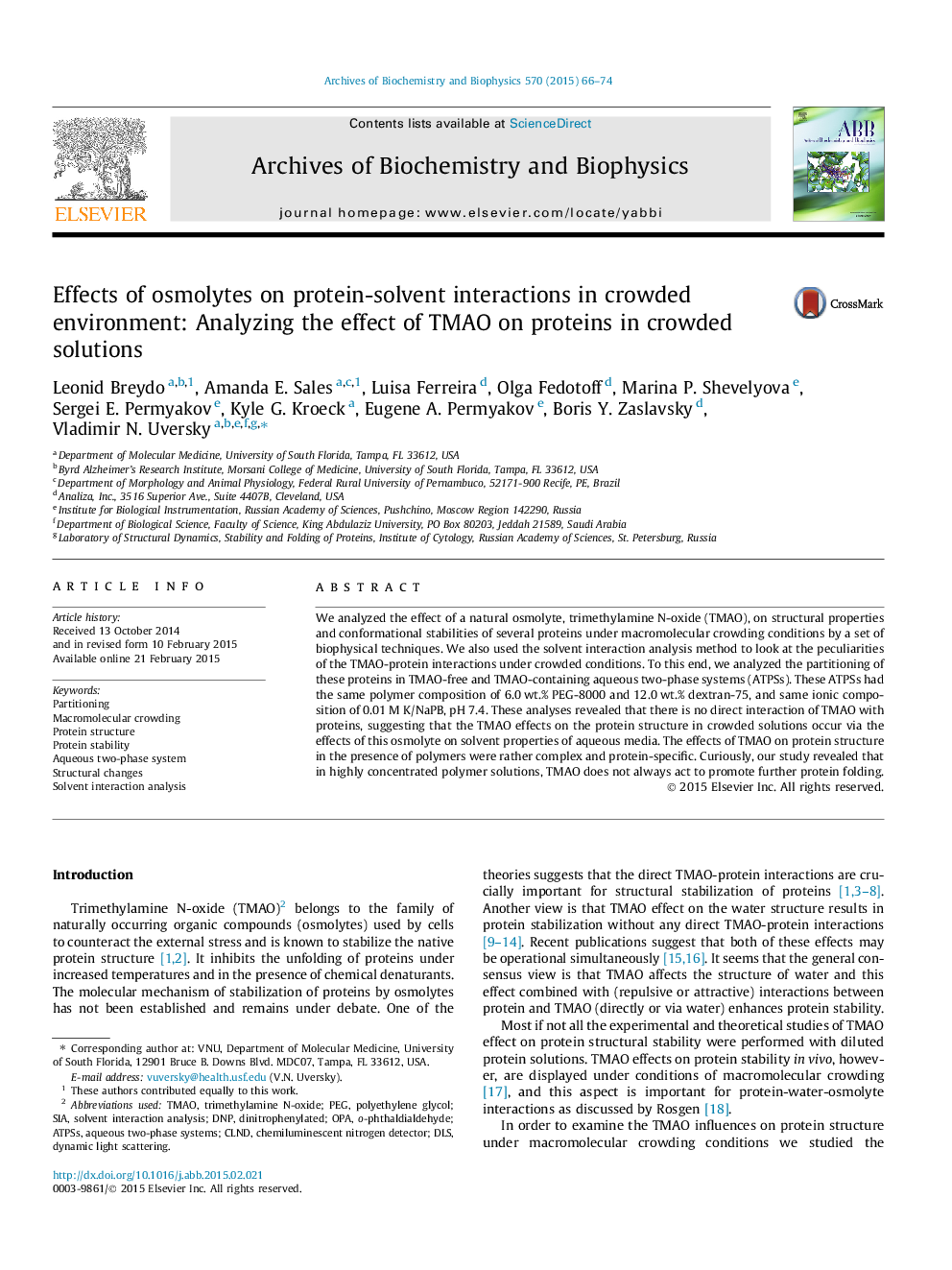| Article ID | Journal | Published Year | Pages | File Type |
|---|---|---|---|---|
| 1925055 | Archives of Biochemistry and Biophysics | 2015 | 9 Pages |
•Protein structure and conformational stability is affected by crowding and osmolytes.•Combined action of crowding agents and osmolytes on proteins is poorly understood.•Multiple biophysical tools including ATPS were used to study this combined effect.•TMAO effects on protein structure in the presence of polymers are protein-specific.•In polymer solutions, TMAO does not always act to promote protein folding.
We analyzed the effect of a natural osmolyte, trimethylamine N-oxide (TMAO), on structural properties and conformational stabilities of several proteins under macromolecular crowding conditions by a set of biophysical techniques. We also used the solvent interaction analysis method to look at the peculiarities of the TMAO-protein interactions under crowded conditions. To this end, we analyzed the partitioning of these proteins in TMAO-free and TMAO-containing aqueous two-phase systems (ATPSs). These ATPSs had the same polymer composition of 6.0 wt.% PEG-8000 and 12.0 wt.% dextran-75, and same ionic composition of 0.01 M K/NaPB, pH 7.4. These analyses revealed that there is no direct interaction of TMAO with proteins, suggesting that the TMAO effects on the protein structure in crowded solutions occur via the effects of this osmolyte on solvent properties of aqueous media. The effects of TMAO on protein structure in the presence of polymers were rather complex and protein-specific. Curiously, our study revealed that in highly concentrated polymer solutions, TMAO does not always act to promote further protein folding.
